Exploring the Fascinating World of Time: From Shadow Measurement to Clocks
Published by Roberto Borghesi in Horology · Sunday 13 Dec 2020
Tags: time, shadow, measurement, clocks, activities, rhythm, existence, blog, post, precious, curiosity
Tags: time, shadow, measurement, clocks, activities, rhythm, existence, blog, post, precious, curiosity
Every man, throughout history, fills his life with activities that, produced and exhausted at different times of the day, regulate his very existence. The execution of these activities thus marks the rhythm, almost like a continuous flow where action and rest, day and night, light and darkness alternate, shaping our perception of time.
This desire to precisely define time is perhaps inherent within us, a way to exorcise the passage of life and its inevitable decline, an indicator of an intelligent and, above all, aware existence. Perhaps motivated by these considerations, the Babylonians realized around 5,000 years ago that time could be measured by calculating the interval between one full moon and the next. They established that this interval was about 30 days and that every 12 cycles of the full moon, the light emitted by our satellite struck the same point on a graduated indicator. They deduced that a solar year could then count 360 days (12 months of 30 days).
This number was also rich in symbolism, related to their geometric knowledge: it equaled the sum of the degrees of a circumference, divisible into sectors—like months—and most notably resulting from the multiplication of the sacred number 12, present in myth and religion (consider the 12 labors of Hercules, the 12 apostles...) and which, with the Babylonians, became a key element of the solar day, divided into two periods of 12 hours (day and night).
Thousands of kilometers to the north, at Stonehenge around 2000 BC, a solar temple was built that indicated with incredible precision, with its enormous monoliths, equinoxes, solstices, and the alignment of celestial bodies. The Egyptians, on the other hand, relied on the shadow cast by the pyramids, measuring its length at various times of the year (tempus fugit, sicut umbra), for highly complex astronomical calculations. Yet all these discoveries remained the domain of a few elites. It was the descendants of the pharaohs who felt the need for “personal” time measurements, in addition to “general” time. This led to the development of gnomons, sundials (meridians), and water clocks (clepsydras), progressively equipped with increasingly sophisticated and complex devices and automata.
The most famous of these is perhaps the one by the Greek Ctesibius (3rd century BC), who created a clock with a float that indicated the hours on a circular dial, following the gradual emptying of the liquid-containing vessel.
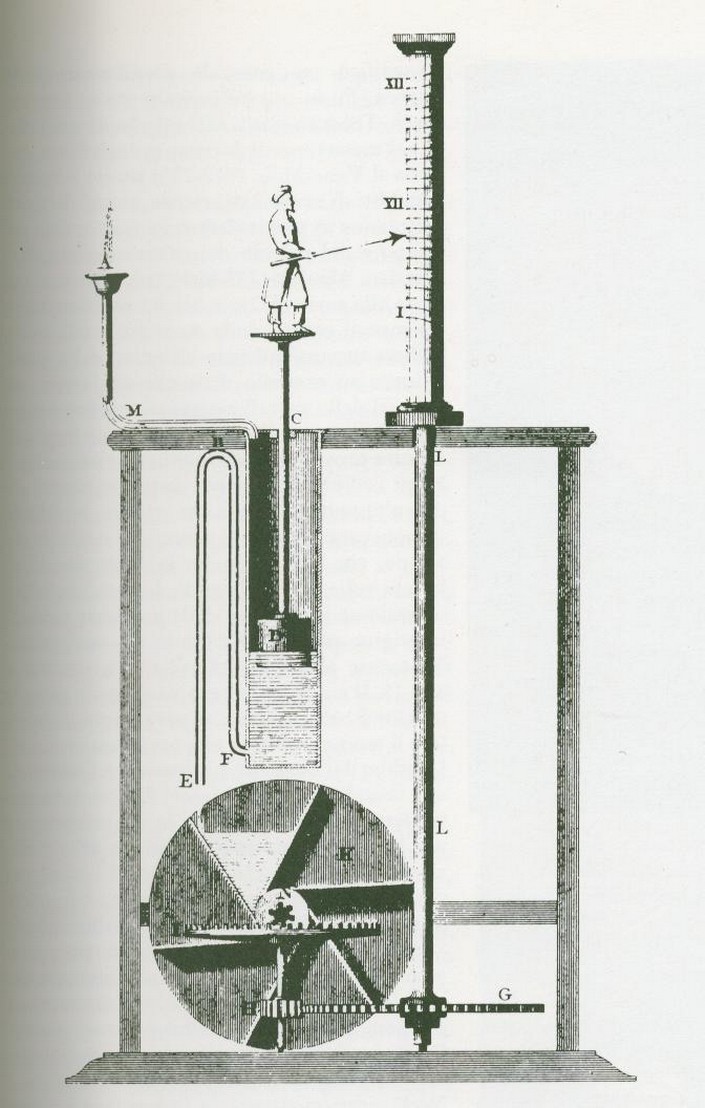
Ctesibius' water clock
The Chinese perfected the technique of calculating the passage of time based on the consumption of a material: thus came oil lamps and candles calibrated to burn for specific periods. They even developed knowledge of the convective properties of lenses, inventing a timekeeping device activated by fuses ignited by lenses exposed to the sun, which then triggered cannons or explosive charges.
Obelisks, pyramids, menhirs, or simply poles, sticks, mountains were therefore the first time markers, allowing the calculation of hours by the length of the shadows they cast; when such shadows were measured on a graduated dial, they took the name sundials. This clock ("hora lego" or, according to another etymology, "horologium," originally referring to water instruments and in various dialects and languages - horloge, reloj, orloge, oriolo...) became especially widespread in the sunniest countries, such as the Arab ones, which brought it to high levels of precision and reliability. Here, a similar concept also led to the development of the astrolabe, an instrument that allowed the identification of certain stars and, based on their position, to determine the time, both day and night. It remained a crucial accessory for navigators like Columbus and Vespucci until the advent of modern clockmaking (which solved the problem of calculating longitude).
The hourglass, especially in its sand version (clepsamia), more practical than the liquid one, saw widespread use throughout the ancient world, measuring times from Athenian lawyers' speeches to soldiers' guard shifts, and remained popular until the advent of the first mechanical clocks many centuries later.
The first known fully mechanical clock is that of Henry de Vick, a German, called to France by Charles V and destined to adorn the Palais de Justice in Paris. Made entirely of iron, it was powered by a weight of 225 kg and is the first example of a mechanism where the three fundamental parts of a timekeeper can be distinguished: the driving mechanism, the gear train, and the regulator. The first provides the power, the second transmits it to the indicating hands, and the third modulates the transmitted energy more or less consistently. This last component is what most spurred human ingenuity in the quest for a gradual, but above all precise, distribution of the power transmitted first by weights and later by a spring drive.
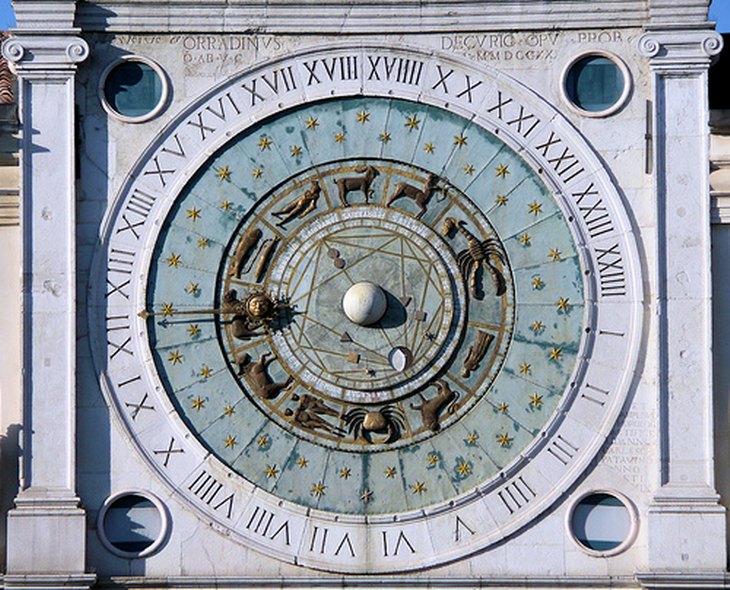
Dondi's clock
In 1344, Giovanni Dondi from Padua created the planetary clock, which earned him the honor of being called Dondi Dell'Orologio in recognition of his genius applied to this craft.
In the Middle Ages, the spread of tower clocks in the churches of major cities revolutionized life and society: the ringing of the bells, operated by the sacristan at agreed times, marked the phases of work and rest for the farmers, called for prayer, and regulated the rhythms of commercial activities.
This spread stimulated the creativity of blacksmith artisans, who developed the first domestic clocks, initially powered by weights and later by spring mechanisms.
Around the mid-15th century, ever more sophisticated escapements were developed in an increasingly shorter time frame, aimed at miniaturizing the mechanisms' dimensions and ensuring their precision.
Cities like Nuremberg and Augsburg developed their economies between the 15th and 17th centuries thanks to the clock and the synergies of clockmakers, goldsmiths, bronze workers, brass founders, engravers, and enamelers who formed guilds dedicated to its construction.
The first pocket watches, attributed to the clockmaker Peter Henlein around 1500, were called Nuremberg eggs, either due to their clumsy shapes or perhaps due to a translation error. In 1525, in Prague, the clockmaker Jacob Zech invented the fusee, a device ensuring the consistency of the spring's force.
The Thirty Years' War (1618-1648) emptied the main German cities of their skilled clockmakers (predominantly Protestant), who mainly emigrated to Paris (where the clockmakers' guild had existed since 1544), where highly specialized workshops flourished. The subsequent revocation of the Edict of Nantes also led to the persecution of these refugees in France, who found asylum in Switzerland and England, which became the main centers of clockmaking production in the centuries to come. In the early 1700s, London was the world capital of personal clock construction (the London guild was established in 1632).
Decisive improvements in clock precision included the application of the pendulum by Christian Huygens in 1657 (studying Galileo Galilei's physical laws), the balance spring invented around 1660 by Robert Hooke, the cylinder escapement by George Graham, which remained in use in pocket watches until the 19th century, and the anchor escapement invented in 1765 by the Englishman Thomas Mudge.
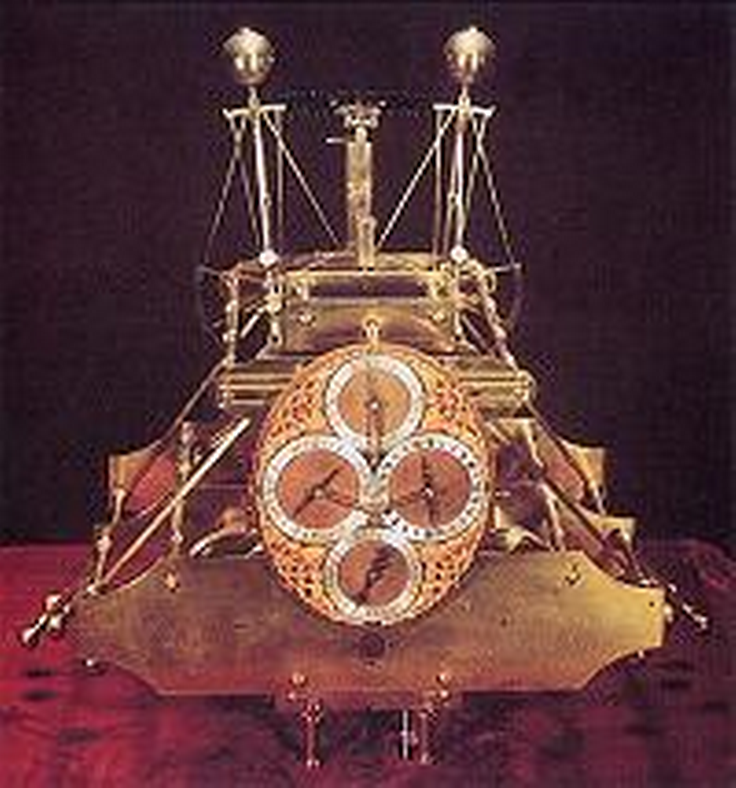
Marine chronometer presented by John Harrison in 1735 (Greenwich, National Maritime Museum)
This pursuit of perfection had real and economic implications: the problem of accurately calculating longitude, for example, had engaged the best mathematicians and astronomers for centuries. While latitude was easily determined by observing the sun and stars, it was much more difficult to establish a ship's position east or west. Naval disasters caused by erroneous calculations cost various states unimaginable sums, to the point where monarchs offered substantial prizes to anyone who could build a clock precise enough for navigation.
Thus, after several attempts, in 1761 John Harrison won a prize of 10,000 pounds, decreed by Queen Anne of England, for his marine chronometer (which erred by just 1 second every eight hours).
This clock was perfected in subsequent years by Pierre Le Roy and his fierce rival clockmaker Ferdinand Berthoud.
Pocket Watches
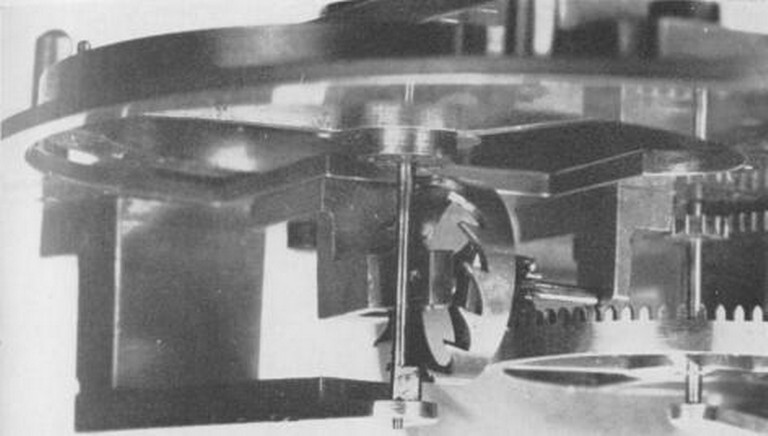
Verge Escapement
As we have previously learned, the so-called "personal" or "pocket" watch developed prominently in the 18th century. An anecdote suggests that tailors in the 1600s had to invent suspenders to allow gentlemen to wear their watches, which were certainly cumbersome and heavy (see the so-called Nuremberg Egg). Fortunately, this awkward characteristic was eliminated thanks to the ingenuity of Jean Antoine Lepine. A Frenchman, he reduced modern watches to a flattened cylindrical shape, eliminating the so-called "fusee" system with a verge escapement and replacing it with a series of bridges supporting the various pivots of the gear train, within which he positioned the balance and the barrel.
Simultaneously, in England, watches were made with ruby (and sometimes diamond) bearings for the first time, in which the axes rotated with less friction, offering better precision.
However, it was Abraham-Louis Breguet, a Swiss transplant in France, who gave a decisive impulse to the evolution of the pocket watch. He adopted George Graham's cylinder escapement in his production, making significant improvements in terms of durability and precision. Among other things, he developed a balance spring with a particular bend in the outer coil, named after him, which allowed a significant evolution of George Clements' anchor escapement.
By the late 1700s, Breguet had become so famous that he had to promptly remedy the counterfeiting of his watches by placing hidden or camouflaged signatures in the enamel of the dials. His clients included Bonaparte and Josephine, the Tsar of Russia, and Louis XVIII.
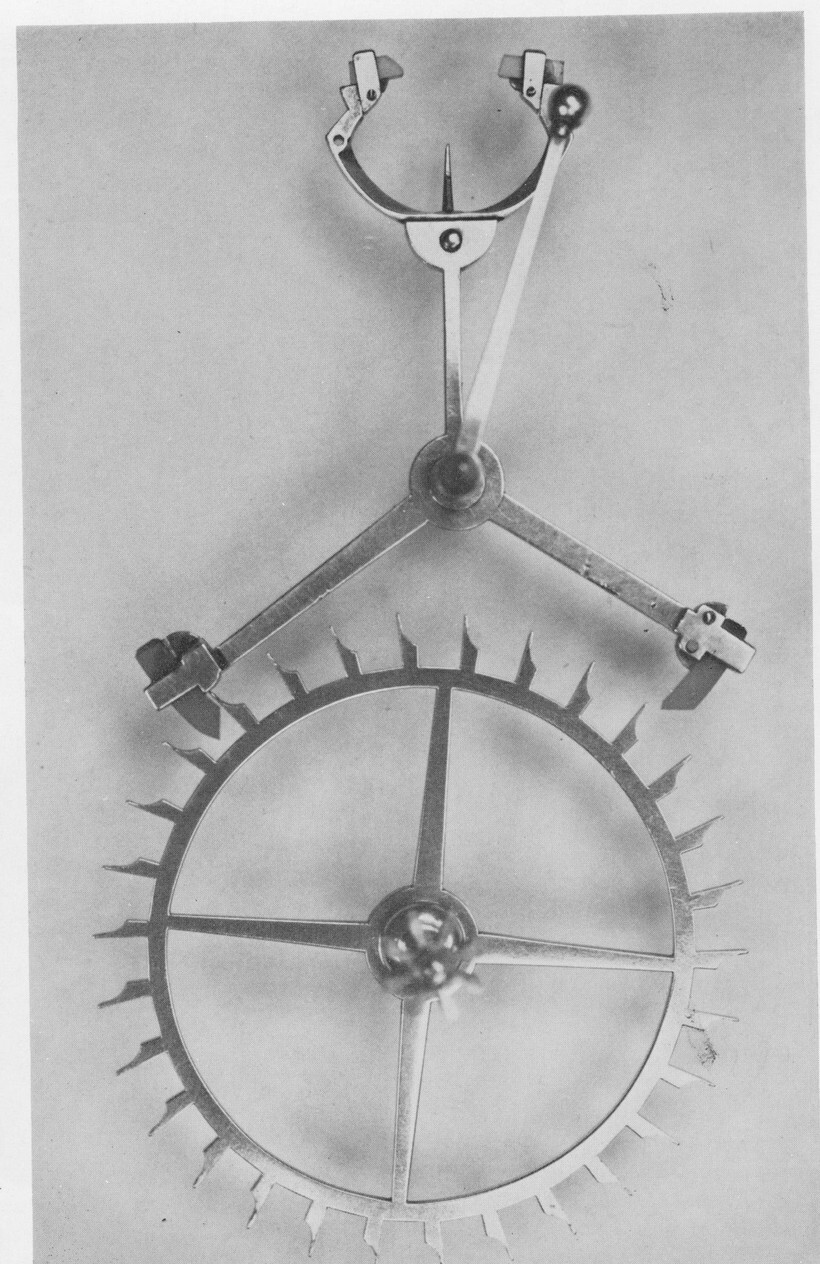
Mudge's Anchor Escapement
Subsequently, Englishmen Thomas Mudge, John Arnold, John Harrison, and others made further technological advancements, especially in developing and improving the anchor escapement, which, besides making watches more precise, helped fortify England's position as Europe's leading clockmaking center.
The industrial revolution radically changed the way clocks were produced: in Switzerland, workshops flourished that produced individual movement parts, which were then assembled by more famous and structured workshops into high-quality, cost-effective watches. Perhaps the first to grasp the commercial possibilities of the affordable watch was Roskopf: his production peaked in the mid-19th century.
The industrial revolution radically changed the way clocks were produced: in Switzerland, workshops flourished that produced individual movement parts, which were then assembled by more famous and structured workshops into high-quality, cost-effective watches. Perhaps the first to grasp the commercial possibilities of the affordable watch was Roskopf: his production peaked in the mid-19th century.
The intense competition among English clockmakers had meanwhile necessitated the search for new markets: many relocated to America, where various schools of style and technique, such as those in Philadelphia, Boston, and New York, flourished in a short time.
The Willard brothers are an example of the high technological level achieved by American clockmakers by the early 19th century. Later, around 1850, American factories like Waltham, Elgin, and Illinois appeared: their watches were certainly technically inferior to the Swiss ones, but their low cost quickly covered the large American market.




